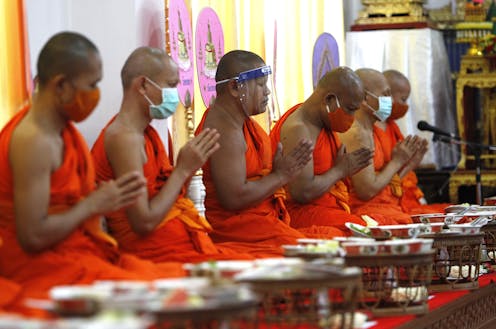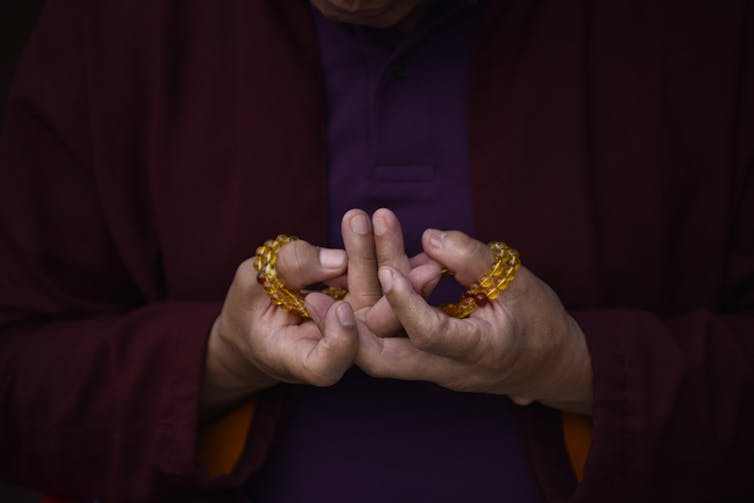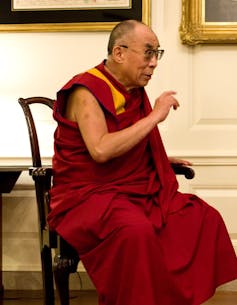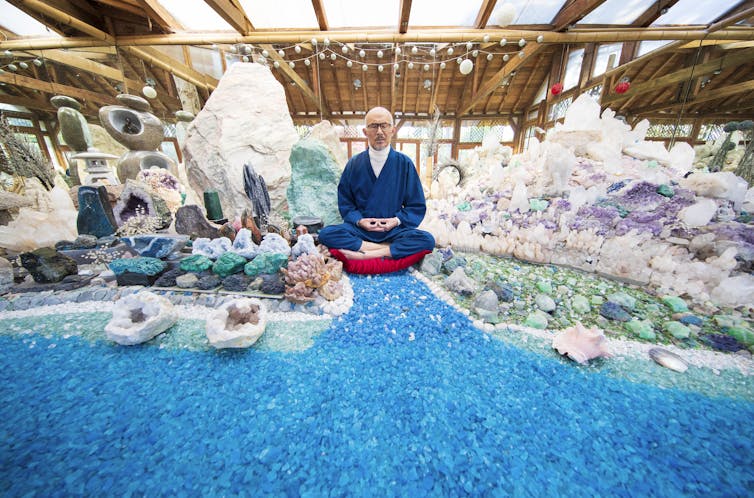The coronavirus pandemic continues its apparently unstoppable journey across the globe. Mexico was always in line to be hit and to be hit hard. It now is, writes Stuart Ramsay for SKY NEWS
There are criteria that indicate an almost perfect storm of catastrophic infections caused by COVID-19.
Mexico's public health service is weak, poverty is endemic, work for millions is ad hoc and dependent on turning up, people live cheek by jowl in vast slums with no running water, families are extended and close, there is scant regard for social distancing.
Millions live cheek by jowl in Mexico City, with many unable to socially distance
The government appears to accept the pandemic will rip through the country and seems ill-equipped to do anything about it.
Our analysis of data shows official death toll figures are hopelessly inaccurate and far below reality. Government insiders say they are underestimating by at least a factor of five.
Add to the mix the fact that the drug cartels import the raw materials for making methamphetamines from Wuhan in China, from where their operatives travel weekly. The cartel cocaine and heroin business is dependent on the US, from where their operatives travel daily.
Worse still, the population has little regard for any rules set by central government.
An employee of the Alejandrina Guzman Foundation wears a face mask with the image of Mexican drug lord Joaquin 'El Chapo' Guzman - Alejandrina's father - printed on it
Then there is Mexico City.
It is absolutely vast, its unofficial population is over 30 million - put simply, half of the UK population lives in one city. It's remarkable.
All the above criteria are relevant here. We have come to trace the development of the pandemic. After a month, it is clear the virus has arrived - the city and perhaps the country are on the brink of a coronavirus disaster.
Huge motorways link enormous boroughs full of millions of people who service the central districts of Mexico City.
These are, in many ways, cities in their own right; with their own mayors and councils that provide public services devolved from the national government.
They are almost uniformly tough. Crime rates are horrendous. Life is overarchingly dominated by poverty.
The suburbs of Mexico City are linked by huge motorways
While news of the virus and its effects have spread across the globe from China, here there is little acknowledgement of the dangers.
For days, we have asked people if they are scared.
Most shrug their shoulders and say they have greater problems to worry about - like getting food.
There is almost no social distancing out in the suburbs.
Outdoor markets are full. A few half-heartedly wear face masks. There is no cleaning of hands. There isn't any running water.
Outdoor markets are busy, but there is no washing of hands
In the warm weather, walking through streets filled with the sounds of shopping and music, past taco stands doing a roaring trade, one could easily forget that there is a crisis developing here.
Then you see the black smoke billowing from crematorium ovens as bodies are cremated, and you remember.
Smoke billows out of a crematorium in Mexico City, busy during the epidemic
We have focused much of our attention on the borough of Iztapalapa.
It is poor and it is huge with a population of over 1.8 million people. It is the centre of the virus outbreak here and is home to the largest food market in Latin America.
COVID-19 virus has found a comfortable place to grow and it is - every minute.
Just from witnessing the shocking numbers of hearses waiting to take the latest victims of the virus to be cremated, it was clear that officialdom would fail to provide us with the real details of what is going on here.
So we went to the people at the forefront of dealing with the virus outbreak: the funeral parlours that have to provide comfort for the grieving families affected by the deaths of their loved ones, and to the local doctors who are the real front line in a battle they have little chance of winning.
This is their story:
Funerales Zapata is a funeral parlour in Iztapalapa. It has been run by the women of one family for three generations.
We asked them if they could help us understand what is going on in their community.
The picture they drew for us is put quite simply: despair.
This time last year they were doing one funeral service a week. Today they are doing five services a day, and that number is how many this small business can cope with. If they could deal with 30, it would be 30. If they had capacity for 100, it would be 100.
In a few minutes of being in their cramped but pleasant office, surrounded by off-the-shelf coffins for sale, it is clear Iztapalapa is in the midst of a coronavirus crisis.
"People here have been very sceptical that the disease even exists," they tell us.
"They think it's something the government or somebody else is doing, they don't believe in COVID as such."
The point they make is that people either don't want to accept that the virus is a problem or worse, they know it is but don't want to be stigmatised by having a family member categorised as a COVID-19 death.
Surrounded by off-the-shelf coffins for sale, it is clear Iztapalapa is in the midst of a coronavirus crisis
"The families can't believe their relative passed away from COVID, they refuse to believe that their relative passed away from the virus. The person who died, they don't even realize what happened to them."
Many of the funeral parlours we have spoken to say that people will try to pretend that their relative did not have COVID-19 but died of natural causes. We know of and have spoken to funeral parlours less scrupulously honest than the Zapatas ladies, who will fake the death certificate so the families can have a normal wake at their homes and a normal burial, regardless of the fact that they could all become infected.
Many families who have lost a loved one want a normal wake at their homes and a normal burial
"People are very scared, very scared here in this area, or rather throughout the country. But they don't believe it, they don't take precautions, don't protect themselves," the three women tell us.
"We have tried to talk to the families, to inform them of the protocols that authorities require us to follow as funeral services."
They say they believe the Mexican government has done its bit to warn people of the dangers faced by the virus, but that people around the country are not listening, and are failing to understand or even acknowledge the scale of the crisis.
Worryingly, they say they have collected more bodies from homes than from hospitals. They work on the assumption that every case they deal with is a potential coronavirus case. They don't take any chances, wearing personal protective equipment for every service.
Posters in Iztapalapa remind people they are in the middle of a COVID-19 epidemic
They're worried for their own families.
"We are also very exposed to taking this virus to our homes," they tell us, "to our relatives… people have no idea what we are going through."
"We are human beings [too], right now we are here, tomorrow we might not be here, and we will be the ones needing the service."
Despite the risks, they carry on. They're trying to bring as much comfort and closure to families who cannot say a proper goodbye.
If the pandemic storm in Italy and France was characterised by the response of hospitals and intensive care units, if the failures of prevention in the UK and Sweden are demonstrated by the large number of deaths in care homes, then the fight against the pandemic in Mexico City is characterised by the failure of social distancing measures and the work of local clinics, most importantly the doctors and nurses.
In this poverty-stricken frontline, they work in small cramped surgeries.
The doctors and nurses are poor as well.
They service a population that will not go to hospital under any circumstances; communities who will struggle on until they admit defeat and then turn to their local doctor. When they do, it is quite often already too late.
Medics like Dr Juan Jose Lira are heroes to their communities
Dr Juan Jose Lira built his clinic 30 years ago. He actually built it. It is in a place called Ciudad Nezahualcoyotl.
Neza is one of the most violent areas in Mexico City.
Every day his clinic is filled with people who have coughs, a temperature, aching bones and pallid complexions.
Neza is one of the most violent parts of Mexico City
None think they have COVID-19, even the ones who minutes later die in his surgery.
"Some people don't even believe it [coronavirus] exists. Patients come here and I tell them, it's probably COVID, they say no, that doesn't exist. The national government made that up," he tells me.
"Because of ignorance, people are not really aware because they haven't seen a case up close."
I have met many people who could be classified as heroes. I'm not sure I have ever met a hero like Dr Lira.
With his own personal protective equipment (PPE), wearing a mask fashioned from a DIY store, he examines patients coughing their lungs out, then types out their notes on an ancient typewriter. He keeps a notebook with a log of his suspected coronavirus patients so he can remember to check up on them.
He's hoping - praying - that perhaps his community won't be as badly affected as the rest of the world because they're used to being exposed to viruses.
"I think the infection rate is going to explode. But maybe there won't be so many deaths, because in Mexico, people are exposed to many types of microbes and perhaps our immune systems are a bit stronger than say, in other first-world, more hygienic countries, where people don't come into contact with microbes as much."
He knows for many though it is hopeless. He knows they won't listen to him saying they must go to hospital. But he keeps going. He is all they have.
"I'm scared. But here I am. I'm working," he says.
Watch Stuart Ramsay's report on the hero doctor
I'm sure the government knows what is happening here, but it seems it has decided to try and ride the storm.
The indicators are that things are going to get worse and worse.
The women from Funerales Zapata will keep burying people and Dr Lira will keep trying to save people.
Eventually the virus will pass, but Mexico City may never be the same again.
Credits:
Words and reporting: Stuart Ramsay, chief correspondent




